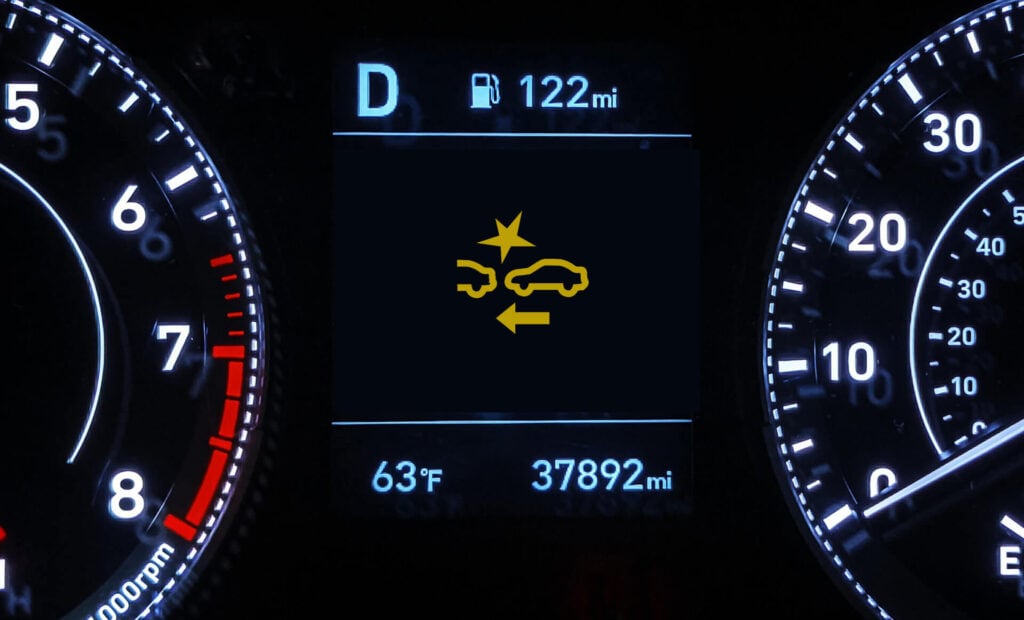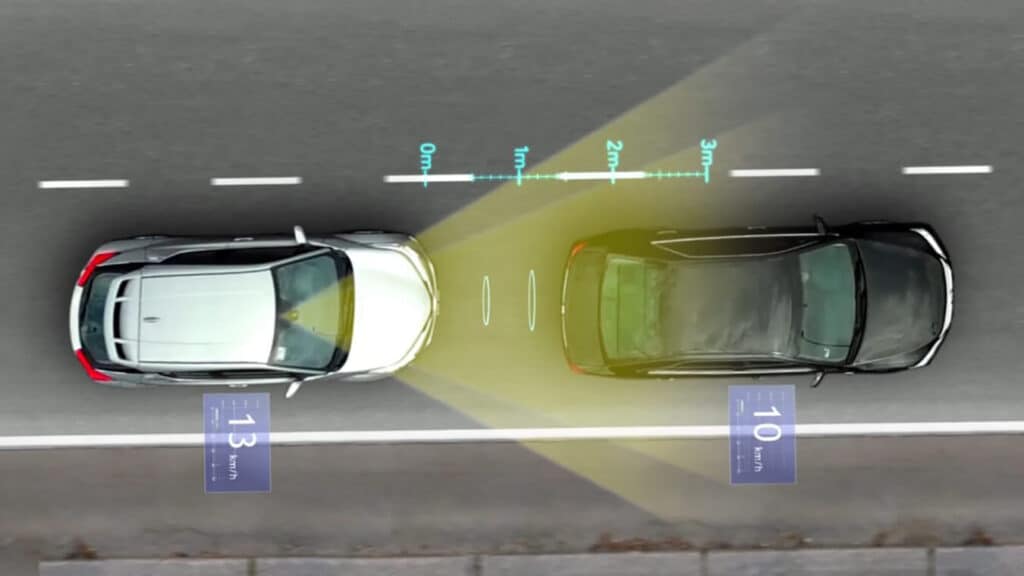The Era of Safe Driving with the Pre-Collision System
Driving in the modern world is no longer just about steering and speed; it’s an intricate dance with technology, where features like the Pre-Collision System (PCS) take center stage. These marvels of engineering are paving the way for higher safety standards, minimizing the risks and consequences of vehicular accidents.

Demystifying the Pre-Collision System: Features and Mechanisms
Imagine a guardian angel that watches over your driving. That’s pretty much what a pre-collision system does.
• Radar Sensing: One of the core components of most pre-collision systems. It scans the road ahead to detect vehicles or obstacles that pose a collision risk.
• Camera Integration: Some systems incorporate cameras to provide a more detailed view of the road, helping the system to distinguish between different types of obstacles like cars, pedestrians, or even animals.
• Driver Alerts: The first line of defense. When the system detects a potential collision, it immediately warns the driver through visual or auditory signals, or sometimes both.
• Brake Activation: If the driver doesn’t respond in time, advanced pre-collision systems can automatically apply the brakes to reduce the speed of the vehicle, lessening the impact or potentially avoiding the collision altogether.
• Steering Assist: Some high-end models offer steering assist, nudging the wheel in the right direction to avoid a collision if the lane beside you is clear.
• Adaptive Cruise Control: Often bundled with pre-collision systems, this feature maintains a safe distance from the car ahead, adjusting your speed automatically.
• Predictive Analytics: Utilizing data from past driving behaviors and current road conditions, some systems can predict risky situations before they occur, offering an even higher level of protection.
• Variable Sensitivity: Certain systems allow the driver to adjust the sensitivity of the collision detection, catering to personal driving styles and comfort levels.
Dashboard Diaries: Deciphering the Warning Lights
When your dashboard lights up with a pre-collision assist warning or a forward collision alert, don’t panic. These lights are your car’s way of communicating the system’s status:
• Pre-Collision Assist Warning Light: Serves as a cautionary alert, letting you know that the system is either actively monitoring or that you should pay close attention to the road. It’s like your car’s way of whispering, “Hey, something’s up. Be on guard.”
• Forward Collision Warning Light: This one’s a more urgent cry for action. It blinks or stays on when there is an immediate risk of collision, similar to a red traffic light screaming, “Stop!”
• Color Codes: Often, these warning lights have color indicators. Green or blue signifies an active system, yellow or orange for attention, and red for urgent action or a malfunction.
• Audio Alerts: Some advanced systems pair the visual alert with an audio prompt. A beep or series of beeps accompany the warning light to capture your attention better.
Detecting Trouble: Common Causes for Pre-Collision System Malfunctions
• Sensor Obstruction: Dirt, mud, or snow covering the sensor can trigger the warning light. Think of it as a foggy pair of glasses; your car can’t ‘see’ properly.
• Software Glitches: Sometimes, it could be a hiccup in the software, requiring a system reboot or update.
• Component Malfunctions: Failing parts within the system, such as a radar or camera defect, can lead to malfunctions.
• Electrical Issues: Corroded wiring or a drained battery can sometimes mess with the pre-collision system, leading to false or no warnings.
Sometimes the light just pops up due to a minor issue. These lights are your early warning system, prompting you to take action before small issues turn into major problems.
Location, Location, Location: Understanding the Pre-Collision Sensor Placement
The positioning of pre-collision sensors is no accident—it’s a meticulously planned decision that auto engineers sweat over. These sensors are strategically located at the front of your vehicle, usually incorporated into the grille or bumper. Their front-facing location allows them to scan the road ahead, looking out for vehicles, pedestrians, or any other obstacles you might encounter. It’s akin to placing your eyes on the front of your head; you need to see where you’re going, not where you’ve been.
The placement is so important because even a slight miscalculation in sensor positioning can lead to inaccurate data collection. Imagine if your eyes were on the side of your head; your depth perception would be off, and you’d probably walk into things more often. Likewise, poorly placed sensors could misjudge distances or even miss an object entirely, rendering the whole pre-collision system ineffective.
On The Move: Speed Limits and Pre-Collision System Activation
When it comes to the speed range for activating the pre-collision system, you’ll find that most are quite versatile. Generally designed to be effective at city speeds—think 30 to 50 km/h—these systems have your back when you’re cruising through local streets or stuck in bumper-to-bumper traffic. At these speeds, the system can react swiftly enough to either stop the car completely or significantly reduce the impact force.
However, if you’re pushing the pedal to the metal on the highway, know that the system’s efficiency may diminish. The faster you go, the less time the system has to react. While most modern systems are engineered to adapt to higher speeds, they may only manage to slow the car rather than bringing it to a complete halt. Think of it as trying to catch a rolling soccer ball versus a speeding baseball; you can stop one much more easily than the other.

Journey with Caution: Driving with an Active Pre-Collision Warning Light
Finding your pre-collision warning light illuminated can be unsettling. While it’s generally not a sign of imminent doom, it’s a signal you shouldn’t ignore. Continuing to drive with an active warning light is a bit like ignoring that low-fuel indicator; you might make it a bit further, but you’re flirting with disaster. Each mile you drive without addressing the issue diminishes the efficiency of your pre-collision system, compromising both your safety and that of others on the road.
If the light has activated, the best immediate action is to proceed cautiously while planning your next steps. This isn’t the time for high-speed shenanigans or risky maneuvers. Instead, consider it your vehicle’s way of saying, “Hey, I need a quick check-up, can we do that soon?” Once you’re able, consult your vehicle’s manual or get in touch with a qualified mechanic to diagnose and address the problem—better safe than sorry.
Maintenance and Repairs: Addressing Malfunctions and Cost Implications
• Routine Checks: Periodic inspections can catch issues early on. It’s like going for a dental check-up to catch cavities before they turn into painful problems.
• Sensor Cleaning: Usually an inexpensive process, involving removal of obstructing debris or substances. Expect to pay around $20-$50.
• Component Replacement: If a crucial part like the radar malfunctions, replacement costs can escalate to hundreds of dollars.
• Labor Costs: The complexity of the repair will dictate the labor costs, which can range from $50 to $100 per hour, depending on your location and the expertise of the mechanic.
Embracing the Future of Assisted Safe Driving
The Pre-Collision System is more than just a feature; it’s a leap toward making our roads safer. Understanding this technology and heeding its warnings can literally be a lifesaver. If you find yourself puzzled by persistent pre-collision system lights, don’t hesitate to seek professional help. In Canada, Uchanics offers mobile mechanic services that can come right to your doorstep for diagnostics and repairs, making your safety their priority.
